HOW TO HANDLE
How to care
The following procedures are recommended to improve the sharpness of blunt knives.
1 Knife sharpener
The use of our sharpener is recommended to regain sharpness in an easy way. Please refer to the chart below to check applicable products and further information.
Sharpener Lineup
|
GSS-01
GLOBAL
Speed Sharpener 
|
GSS-02
GLOBAL
Sharpener 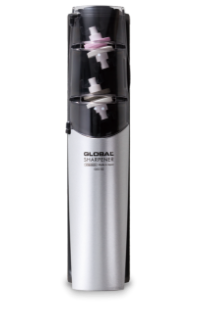
|
GSS-03
GLOBAL-IST
Sharpener 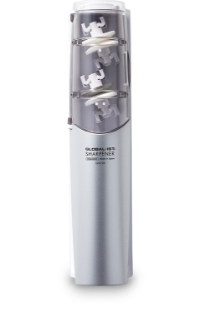
|
GSS-04
GLOBAL
Sharpener Plus 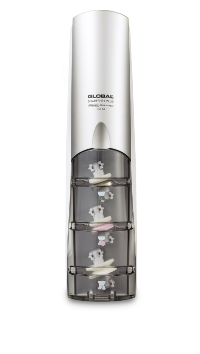
|
|
|
Specifications Specifi- |
Exclusive easy sharpener |
Exclusive sharpener |
Exclusive sharpener |
Exclusive sharpener for both |
|
Effectiveness |
|
|
|
|
|
Effectiveness |
|
|
|
|
|
Price |
1,320 yen (tax included) |
5,500 yen (tax included) |
6,600 yen (tax included) |
7,700 yen (tax included) |
|
HOW TO |
|
Please check our movies for more instructions. |
Please check our movies for more instructions. |
Please check our movies for more instructions. |
|
Compatible |
Please check here for specific product numbers |
|||
All sharpeners do not work for single-bevel knives (DEBA and YANAGIBA) and serrated knives (bread knives and cheese knife).
2 Use of whetstone
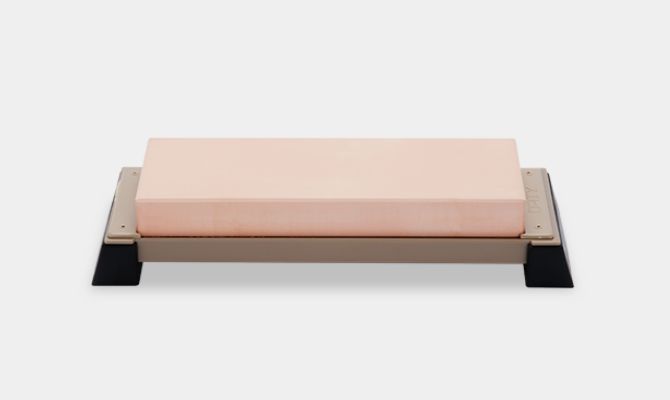
The use of whetstones at home is the best recommended way to sharpen any types of knives.
It allows you to maintain the edge of knives at your preferred level, and it can also repair the damage on edges.
Please try any whetstones designed for stainless steel products.
3 Knife sharpening service by a manufacture
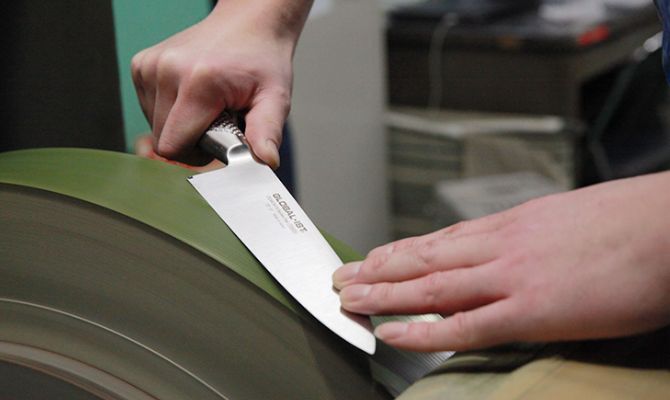
Our experts can manually regain sharpness to your blunt knives just like brand-new ones.
Please contact us for further information.
PRECAUTIONS
-
For your safety
- Do not use knives for any purposes other than cooking.
- Keep away from children.
-
For prevention to the knife edges from breaking, chipping, and being nicked
- Use cutting boards made of soft material, either wood or plastic.
- Do not put strong impact on to the knives by dropping in a sink or on a floor.
- NEVER cut frozen food and/or ice.
- Do not use the knives to cut food with a hard surface (pumpkin, corn, dried rice cakes, bones, etc.).
- Do not scorch the knives or put them in heat on purpose.
- Do not knead the knives or chop food in a rough manner.
-
For prevention from rust
- Do not use dishwasher.
- Wash with neutral detergents, and dry them thoroughly before storing.
- Wash the knives immediately after cutting food containing a high level of salt or acid (citrus, pickles, etc.)
- To avoid secondary rusting, do not leave the knives in contact with steel wools, steel knives, or other steel products for a long period.
- Do not use bleach to the knives as it can cause rusting.
-
How to remove rusts
As soon as you notice rusts, remove them with a rust remover, abrasive cleanser or melamine sponge.
It becomes more difficult to remove rusts when being left on stainless steel because they progress deeper. -
Should we not wash the knives in a dishwasher?
The knives cannot form a protection film as invisible miniscule residues remain on the surface of the knives
when circulating water for washing / rinsing.
Moreover, this state can generate rusting when getting dried at high temperature.
Detergents for washing dishes (alkaline or acid) can also cause rusting for stainless.
It is recommended to store stainless steel knives after hand-washing with neutral detergents then dry thoroughly.
The mechanism of rust
What is stainless steel?
An alloy containing a minimum of 10.5 percent of chrome is regarded as “stainless steel”.
Various elements other than chrome are also mixed in stainless steel.
Carbon, for example, is needed for a heating process in order to make stainless steel hard enough to be used as knives
(the higher in carbon in stainless steel, the harder it becomes after a heating process. This, however, makes it more susceptible to rusting).
There are many different types of stainless steels including those containing nickel, molybdenum, vanadium, etc.
They have different features such as being viscoid, highly corrosion resistance, and so on.
Oxygen and chrome amalgamate
and form the passive film

Rust resistant effect
When stainless steel is exposed to the air, chrome amalgamates with oxygen and form a thin film (passive film) that protects the stainless steel. This prevents the steel from contacting dirt, oxygen, or liquid (which are the causes of rust).
Stain hinders oxygen and
chrome to
amalgamate
and cause rust
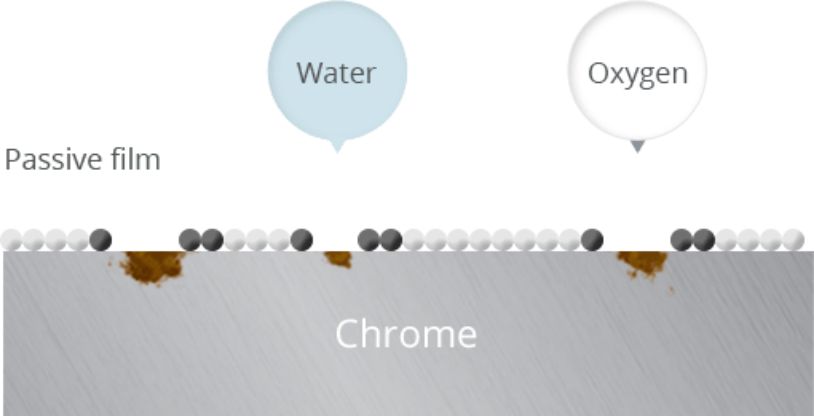
Reasons for getting rust on stainless steel
Dirt and moist on stainless steel knives cause rusting because chrome in stainless steel cannot contact with oxygen, which prevents the steel from forming the protective film. Storing stainless knives in humid environment can also result them in getting rust for the same reasons.




